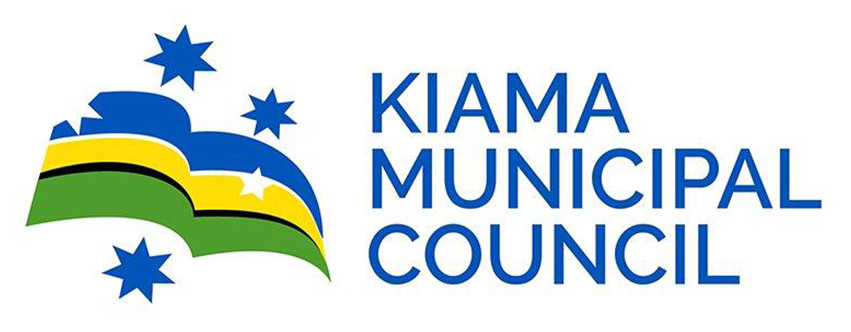Football in Australia has some important decisions to make over the next few days and weeks.
Will we work together and take Australia’s largest participation sport to a new level of success on the local, national and international stage or will we return to the bad old days of self-interest and suffer the inevitable results?
The question – and its answer – is directly linked to the impending visit by FIFA and AFC representatives to help the game’s stakeholders find a way to expand our representative Congress.
As Chairman of Football Federation Australia, I welcome their support. As the FIFA/AFC delegation will learn as they speak to football’s various groups, the issue at the heart of the evolution of our Congress is fundamentally about whether football in Australia is managed on behalf of all of those who participate in and love the game or is controlled by narrow interests.
Many of you will recall the chaos in football during the early years of this century. The game was broke and broken, riven by self-interest and unable to operate a sustainable national league. It took the intervention of the Federal Government and many reformers within the game to change that.
As a result, FFA was formed with a Congress of Members that represented, through a democratic process, almost everyone involved in the game because the Member Federation representatives were themselves elected by stakeholders in their state or territory and these were in turn elected by the grassroots. It also included a representative of the A-League clubs. The primary function of the Congress is to elect the independent Board of FFA.
With its constitutional framework and with FIFA approval, FFA had responsibility to administer the game – grassroots, professional leagues and national teams – on behalf of all stakeholders.
Improving our performance at international level was an obvious priority but so too was the creation of a viable professional league for men and women, as well as a nationally-coordinated approach to community football and player development.
A dozen years on with a Hyundai A-League now mainstream and continuing to increase in quality and popularity, it’s easy to forget its origins.
The A-League was created by FFA on behalf of the whole football community and is for the benefit of that football community. It was operated then, as it is now, by FFA.
For much of its short history, the A-League has been subsidised by other revenues such as those generated from Socceroos matches and government grants. FFA granted licences to commercial interests and individuals to operate clubs and they have themselves invested significantly in their licences over the years.
Some clubs and owners have been a part of the competition since its inception, others have come and gone. Some are recent arrivals.
There is absolutely no doubt about the importance of the contribution those club owners, their administrators, coaches and players make to the game.
The same is true of the Westfield W-League which this year enters its 10th season – a genuine trailblazer in women’s sport, domestically and internationally.
The game has come a very long way in a relatively short time and many people have had a hand in that success. The simple reality however, is that to achieve greater success there needs to be some change.
FFA believes that the Congress needs to evolve and that any change must benefit all in football, not just the interests of a few.
The Hyundai A-League club owners want greater representation on the Congress. Professional Footballers’ Australia – the players’ union – and a newly-formed group representing the National Premier League (NPL) clubs also want seats at the table.
In other countries, delegates from what FIFA calls Special Interest Groups (SIGs) such as women’s football, referees, coaches, futsal, players with disabilities, community clubs and many more variations on these, sit on their equivalent of our Congress.
Under our democratic federated system these groups are mostly represented by the Member Federations for each state and territory.
To facilitate expansion of the Congress, FFA established a consultation process among and between all stakeholders but no unanimous position could be agreed.
During the process the clubs went on record stating their belief that they, in combination with the PFA (which represents around 300 professional/elite level players out of more than a million participants around the country) were entitled to more than 50% of the voting rights in Congress. All State and Territory Federations, to their credit, were prepared to cede some of their voting power. There remain different views about the precise balance of the Congress.
As a result of the impasse between stakeholders, FFA proposed to FIFA a two-step model by which the Congress would move now to include nine State and Territory Federation representatives, three A-League/W-League representatives (up from one) and one PFA representative of the professional players (currently not represented).
The second stage would firstly expand the Congress further through the Members subsequently voting to include delegates from among the SIGs mentioned above. The rationale for not including them now was that existing members of Congress believed that no SIG other than the PFA was yet organisationally ready to be admitted to a new Congress. The intention was to conduct a consultative process to identify appropriate SIGs for admission to the Congress. Secondly and most importantly the second stage would occur after the conclusion of work to determine a new operating model for the A-League.
FFA has strongly accepted and promoted the fact that the time has come to create a new operating model for the A-League that will give clubs more influence, attract more capital into the game, increase the value of the investment made by current owners and allow the league to expand with new clubs to 12 teams in the near future and then to 14 teams and beyond in the years ahead as it becomes financially viable to do so.
Without a new A-League operating model, sustainable expansion of the league will be impossible without diluting the funding to existing owners. Furthermore, dreams of a viable, national second division will remain just that: dreams.
FFA agrees on the principle of a new operating model but the work on this important change should be carried out collaboratively with the A-League clubs with the right spirit of cooperation including assessing the impact on the rest of the game and not under threats of taking the issue into a courtroom.
Despite support from 80% of existing Congress members – a minimum of 75% was needed under FIFA rules and Australian law – the FIFA committee did not accept the two-stage model, and the clubs hardened their position. The clubs made it clear that unless they were satisfied they would not accept the validity of a special resolution even if it were passed by the requisite number of members required by law. Instead they would lobby FIFA for the imposition of a normalisation committee by FIFA and the removal of the independent FFA board.
Whatever the final makeup flowing from the impending discussions with FIFA, it will be critical to maintain a balance of interests amongst the various groups.
For its part FFA is open to exploring appropriate and balanced alternatives. Without balance in the Congress, the independence of the FFA Board and the chance of further evolution of the Congress will be threatened.
This principle extends to every aspect of the administration of football in Australia. The grassroots, professional leagues and national teams form an ecosystem – they are interconnected and interdependent. None can thrive without the others. This means that every part of the game must continue to benefit from growth in commercial revenue as part of our cycle of 4 Year strategic plans which in turn follow the 20 Year Whole of Game vision released in 2015.
The A-League, including distributions to club owners, this year will receive about 60% of FFA’s financial resources – up from 50% five years ago. This weight of investment in the A-League has been a strategic decision by FFA in order to underpin the investment of club owners in their own clubs. But club owners have made no secret of their demands for more power, and more money. They seek an independent league, run by them for their benefit.
Their clubs are commercial, for-profit businesses, intended to generate a return on their investment. FFA has no issue with that.
But it’s worth noting that more than half of the clubs are wholly or majority owned by foreign individuals and organisations with little or no connection to Australian community football or our national teams.
The clubs’ claims of how much money they have lost is exaggerated, and I dispute that it has been “lost.” A common feature of football leagues around the world is that clubs lose money in the short-term with the objective of their investment increasing over the long term – investors understand this. It is no different here. If those licences are one day sold, there is little likelihood those profits will then be reinvested in the game in Australia.
Five years ago, clubs received cash distributions of $1.2 million each year from FFA; this year that has risen to $3.55 million – a three-fold increase. Further, much more is spent directly by FFA on the A-League, covering items like team travel.
During the recent process, the clubs originally asked for $6 million a year each in cash – choosing not to accept the impact on FFA’s capacity to give more without cutting off funding grants to the rest of the game – the grassroots and national teams.
Increasing the distribution to $6 million per year, per club, would result in the A-League’s share of FFA’s resources rising from the current 60% to 80%. This would slash the amount available for the rest of the game from $47 million to $23 million.
Would a proud sporting nation like Australia tolerate such a drastic cut? Especially now with the recent stellar performance of the Matildas in the US and ranked 7th in the world; and the Socceroos poised to compete in their fourth successive World Cup tournament? Would it tolerate our junior international teams, and football development, being starved of resources? This is an area that is in genuine need of greater resources to underpin our future success.
Today, the quality of the A-League has never been higher, and club memberships, crowds and broadcast numbers continue to improve.
Last year, in a difficult and competitive broadcast market, FFA negotiated the best broadcasting deal football has ever seen.
Serious investors and major international football entities have expressed interest in investing in an expanded A-League.
It is a fact that the A-League is the key economic driver of the game, something which is acknowledged in FFA’s long-term strategy which has deliberately redirected greater resources to the league.
But FFA believes that Australian football should never be carved up to serve sectional interests. We want to see all parts of the game succeed, not one at the expense of the others.
And we would like to achieve consensus on the Congress, but with multiple stakeholders all representing legitimate interests, unanimous agreement may not be achievable. However, a level of consensus that equates to a clear majority in favour of a balanced, expanded Congress is certainly achievable.
So, that is the heart of the discussion that will take place among the game’s stakeholders and FIFA/AFC over the next week.
Will the sport continue to be governed by an independent custodian with an obligation to nurture and protect the entire game in the balanced interests of its many stakeholders or split along self-interested lines?
The outcome is likely to have a profound effect on football for years to come.
Football can have it all – a popular, financially stable and growing A-League; a flourishing grassroots and national and club teams that are routinely competitive on the global stage.
I am proud to be Chairman of FFA and of our board. We are involved for no other reason than to serve our country and see football continue to grow, prosper and build on the huge gains of the past 13 years and to honour the legacy of those who served the game for decades before that.
With goodwill and maturity from all within the game in the coming weeks we can secure future success on behalf of all who truly love our beautiful game.
Steven Lowy AM
Chairman, Football Federation Australia



